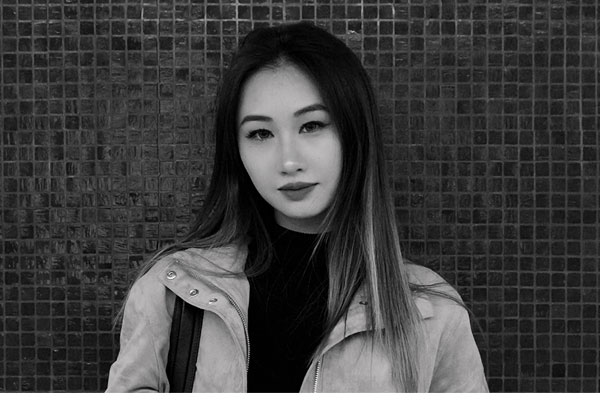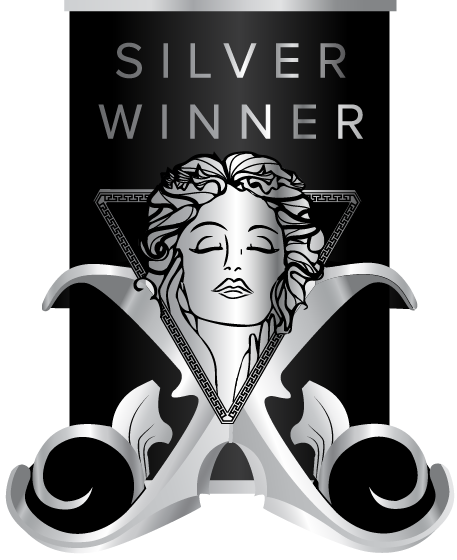
Interview
Chenyi Wang
1 Congratulations on winning the MUSE Design Awards! Can you introduce yourself and share about what inspired you to pursue design as a career?
My name is Chenyi Wang, and I am a landscape designer with a passion for integrating culture, ecology, and community engagement. I have lived and studied in the United States, Australia, and China, which gave me a unique perspective on how landscapes shape human experience. Growing up across different cultural contexts, I realized that landscapes are not only about aesthetics but also about identity, memory, and belonging. What inspired me to pursue design as a career was the possibility of transforming underused or forgotten sites into meaningful places where people can connect with nature, history, and each other. Design, to me, is both a creative and civic act. It tells stories while shaping environments that resonate with people’s lives.
2 What does being recognized in the MUSE Design Awards mean to you?
The MUSE Design Awards celebrate creativity and innovation on a global scale. Being recognized affirms that my design approach—integrating cultural heritage, ecological awareness, and public engagement—resonates beyond a local context. For The Beer Brewing Fermentation Garden, winning this award highlights how industrial heritage and cultural narratives can become powerful tools for contemporary landscape design. It demonstrates that design rooted in history can address modern challenges such as community identity, sustainability, and cultural preservation. On a personal level, it validates years of exploration into how landscapes can go beyond functionality to become living, experiential stories. It encourages me to continue pushing the boundaries of what public spaces can achieve in shaping cultural and ecological futures.
3 How has this achievement impacted your career, team, or agency, and what opportunities has it brought so far?
Winning has increased both my professional visibility and the project’s influence. It opened doors to collaborations with designers, researchers, and cultural organizations interested in exploring the intersection of heritage and design. It also brought opportunities for public exhibitions and academic discussions, allowing the project to be studied as a model for transforming industrial legacies into public assets. For me, it provided a platform to exchange ideas with global peers and positioned my work within a larger discourse on sustainability, community engagement, and cultural placemaking. More importantly, it has inspired me to pursue projects with greater ambition, aiming not just to solve spatial problems but to create long-term cultural and ecological value for communities and cities.
4 What role does experimentation play in your creative process? Can you share an example?
Experimentation is central to my creative process. Innovative ideas emerge when I challenge conventions and embrace uncertainty. While studying in Australia, design education encouraged bold conceptual exploration, sometimes prioritizing creativity over immediate practicality. Later in the United States, I learned to balance creativity with real-world constraints such as ecological performance, community needs, and technical feasibility. For The Beer Brewing Fermentation Garden, experimentation led me to translate the brewing process into spatial experiences. For example, mist-filled cooling zones were inspired by the dramatic temperature changes during brewing. This sensory approach allowed visitors to feel the brewing story rather than just see it visually. It was a design risk, but it became one of the project’s most memorable features.
5 What's the most unusual source of inspiration you've ever drawn from for a project?
One unexpected inspiration came from traditional Chinese landscape paintings. These works often depict layered mountains, winding paths, and dynamic atmospheres using very few strokes. While working in the U.S., I noticed that the appreciation for vast open spaces had parallels with this aesthetic, even though the cultural contexts differed. For The Beer Brewing Fermentation Garden, I used this inspiration to design spatial sequences where visitors move through different “scenes,” much like walking through a painting. Each stage of the brewing process becomes a unique vignette, from the warmth of copper tones to the coolness of mist, creating a rhythm that echoes both art and craft.
6 What’s one thing you wish more people understood about the design process?
I wish more people understood that good design is not instant. It involves research, dialogue, testing, and iteration. In Australia, communities often participated actively in early design stages, giving feedback and shaping outcomes. In the U.S., the process is more structured with professional review and technical validation. Both experiences taught me that design quality emerges from time, care, and collaboration rather than a single act of inspiration. Design is ultimately about creating meaning. It requires listening to communities, studying history and ecology, and experimenting with materials and forms before arriving at the final outcome.
7 How do you navigate the balance between meeting client expectations and staying true to your ideas?
Balancing client expectations with design integrity requires listening deeply and clearly communicating the intent behind design choices. I approach this by showing how innovative ideas can address functional needs, enhance the user experience, and provide cultural and ecological value. I aim to create a shared understanding that design can be both practical and meaningful, aligning client goals with creative vision.
8 What were the challenges you faced while working on your award-winning design, and how did you overcome them?
One of the key challenges was integrating Anchor Brewing’s industrial heritage with public usability and ecological sustainability, while also transforming the technical brewing process into an immersive experience for visitors. This required translating abstract industrial operations—malting, boiling, cooling, and fermentation—into sensory, spatial narratives that are both engaging and ecologically responsible. I overcame these challenges by developing layered design strategies: mist-filled zones for sensory immersion simulating the cooling phase, permeable paths for stormwater management, native plantings for ecological resilience, and careful sequencing of spaces to reflect each stage of the brewing process. Materiality, spatial arrangement, and atmospheric effects were used to tell the story of brewing in a tangible way. Iterative modeling, prototyping, and testing ensured that these elements worked harmoniously, providing both educational and recreational value to visitors while respecting ecological and cultural objectives.
9 How do you recharge your creativity when you hit a creative block?
I recharge by stepping away from the design desk and immersing myself in different forms of observation and practice. I sketch, take walks in nature, visit museums, or explore unexpected sites. This practice allows me to see familiar problems from new perspectives and discover unconventional solutions that can be integrated into my projects.
10 What personal values or experiences do you infuse into your designs?
I infuse curiosity, empathy, and a respect for cultural and ecological contexts into my designs. My experiences have taught me to consider how spaces can foster connections, tell stories, and create meaningful experiences. I strive to create landscapes that resonate emotionally, respond to their surroundings, and encourage community engagement.
11 What is an advice that you would you give to aspiring designers aiming for success?
Stay curious, experiment boldly, and always ground your ideas in context. Success comes from continuous learning, empathy for users, and the courage to pursue innovative solutions while respecting the history and ecology of the sites you work with.
12 If you could collaborate with any designer, past or present, who would it be and why?
I would choose to collaborate with Peter Walker, who is known for his minimalist and modernist approach to public space design. Walker’s ability to create serene, contemplative spaces through simple yet powerful design elements aligns with my own design philosophy of creating meaningful and evocative environments. Collaborating with him would be an invaluable opportunity to learn from his experience and to contribute to projects that have a lasting impact on communities.
13 What's one question you wish people would ask you about your work, and what's your answer?
I wish people would ask how my designs create measurable impact on communities, culture, and the environment. I would answer that The Beer Brewing Fermentation Garden not only translates Anchor Brewing’s 127-year-old traditional beer-making process into an immersive spatial experience but also revitalizes a historic industrial site into a vibrant public destination that attracts an estimated 15,000–25,000 visitors annually. The project strengthens community bonds, educates visitors on traditional brewing, and celebrates local cultural identity. Beyond the aesthetic and cultural experience, the garden demonstrates a natural approach to water resource management. Approximately 70% of the 53,680 ft² (1.23-acre) site is planted with native and adaptive vegetation, and 15% consists of permeable pathways. In addition to capturing rainfall, the garden is designed to safely receive and recycle a portion of non-potable factory wastewater through plant- and soil-based filtration systems, artificial wetlands, and permeable surfaces. Using these natural processes, the garden can potentially treat and reuse 123,000–246,000 gallons of wastewater annually, supplying irrigation, water features, and landscape maintenance needs. This approach not only enhances sustainability and local biodiversity by supporting 15–20 species of plants and insects but also contributes to carbon reduction—approximately 50–70 metric tons annually—by offsetting energy-intensive mechanical treatment processes. Furthermore, the project elevates Anchor Brewing’s brand identity, potentially increasing product sales by 5–10% and generating an estimated one million in direct economic benefits, while stimulating surrounding local businesses. Over five years, these cultural, environmental, and economic impacts demonstrate how thoughtful landscape design can deliver long-term benefits to both local communities and the broader national heritage.

